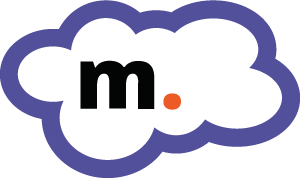Caption: Person who is Deaf and blind learning how to use a computer
Photo credit: cobalt123 via Foter CC BY-NC-SA
U
sually when people ask me what I do for a living, the subject of Section 508 comes up. This is typically followed by a long, blank stare, coupled with a dumbfounded pause while they try to figure out what the hell I’m talking about. “I’m not familiar with that,” is a rather common response. So I tell them I help government contractors create and design complex documents and websites that are accessible to people who use screen readers. The problem with my answer is that it doesn’t really clarify what is Section 508.
What is Section 508?
Section 508 is an amendment to the Rehabilitation Act of 1973 that Congress signed into law in 1998. It was designed to help people with disabilities access information provided by the government. Basically, it is a law that requires the Federal government to provide accessible Electronic or Information Technology to everyone — whether they’re a private citizen or Federal employee. Electronic & Information Technology (E&IT) refers to most things you’d find in a Staples catalogue.
While the current law specifically applies to computers, TVs, fax machines, software and computer peripherals and other geeky stuff, the broad language applies to quite a few things. If a Web Developer writes a program that automates tasks for an agency, that code must be accessible to individuals who have a disability. A general rule is that if it is web-related, it is most likely covered by Section 508.
All Electronic Information
The most obvious web-based communication format would be a web site. Therefore, the majority of Government agencies who claim Section 508 focus the majority of their attention on web sites. However, a web site isn’t the only thing they are required to make accessible. Any document, video, deliverable or product that a Government agency posts online must be accessible to everyone The most common culprit of inaccessible formats found on these sites are typically Word documents, PowerPoint files and PDFs.
PDFs have an advantage over those other documents in terms of providing accessible content, because the PDF are not a proprietary format. While created by Adobe, control over the specification for PDF was transferred to the International Standards Organization (ISO) in 2008. PDFs retain the formatting of the creation software to ensure that it looks the same no matter who looks at it. Further, the current specifications (ISO 32000) allows for significant improvement in making documents accessible with the use of PDF/UA.
Who has to comply?
Almost all Federal agencies must comply to Section 508 of the Rehabilitation Act. However, as the Department of Justice Civil Rights states here:
… [I]f the government entities receive Federal funding, the Rehabilitation Act of 1973, generally require that State and local governments provide qualified individuals with disabilities equal access to their programs, services, or activities.U.S. Department of Justice Civil Rights Division
Contractors
This law also covers vendors who sell products and services to the Federal Government as well. Subcontractors are required by law to provide accessible services to government agencies. Unlike a Federal agency however, a vendor cannot be sued when their product or service is inaccessible under Section 508 rules. The burden for compliance falls on the funding agency, who can be sued (albeit not for money). On the other hand, like any other client, an Agency can withhold funding for a project that was contractually obligated to be Section 508 compliant.
How about private companies?
Private companies are not required by law to be 508 compliant. On the other hand, they can get into a number of legal issues for not providing equal access to their customers.
Anybody Else?
Depending on the reasons for receiving Federal funding, other organizations such as schools, online learning centers, and libraries may also be required to comply with Section 508. A good way to look at it might be that if the Rehabilitation Act applies to a particular organization, then that organization is probably bound by the provisions of the Rehabilitation Act. Because Section 508 is a part of the Rehabilitation Act, it can be assumed that the rules of Section 508 should also be followed.
Complaining
There is an administrative complaint process put in place that allows any individual with a disability to file a complaint alleging that a Federal department or agency has not complied with the accessible technology standards. The complaint process is the same as that used for Section 504 of the Rehabilitation Act, for complaints alleging discrimination on the basis of disability in Federally-conducted programs or activities. Individuals can also file civil action against an agency.
While private contractors don’t have pending lawsuits hanging over their head (well, at least not because of Section 508), vendors can protest the validity of another vendor’s bid to perform the same job.
A final thought
The purpose of Section 508 is to level the playing field for everyone. It might seem like a major headache to innovators and creatives who are making documents, websites, software, but the number of individuals with disabilities is in the millions in the U.S. alone. If the idea is to get information out there to everyone, this is a way to ensure that it happens. Furthermore, because the government is being asked to do more and more with less money, this provides an opportunity to get important information out there without needing to spend lots of money on dead trees.


Very nicely done. My experience has been in the financial industry working with a top 5 bank. I can tell you that they are also concerned about the potential risk of lawsuits in the area of accessibility.